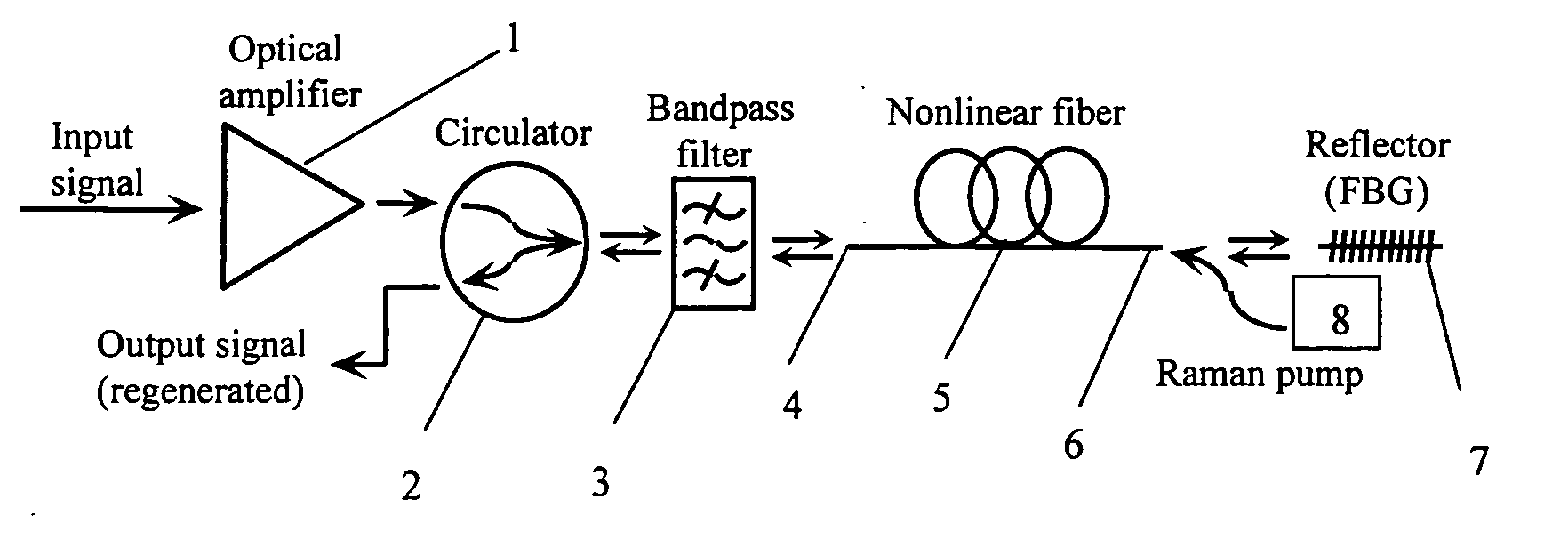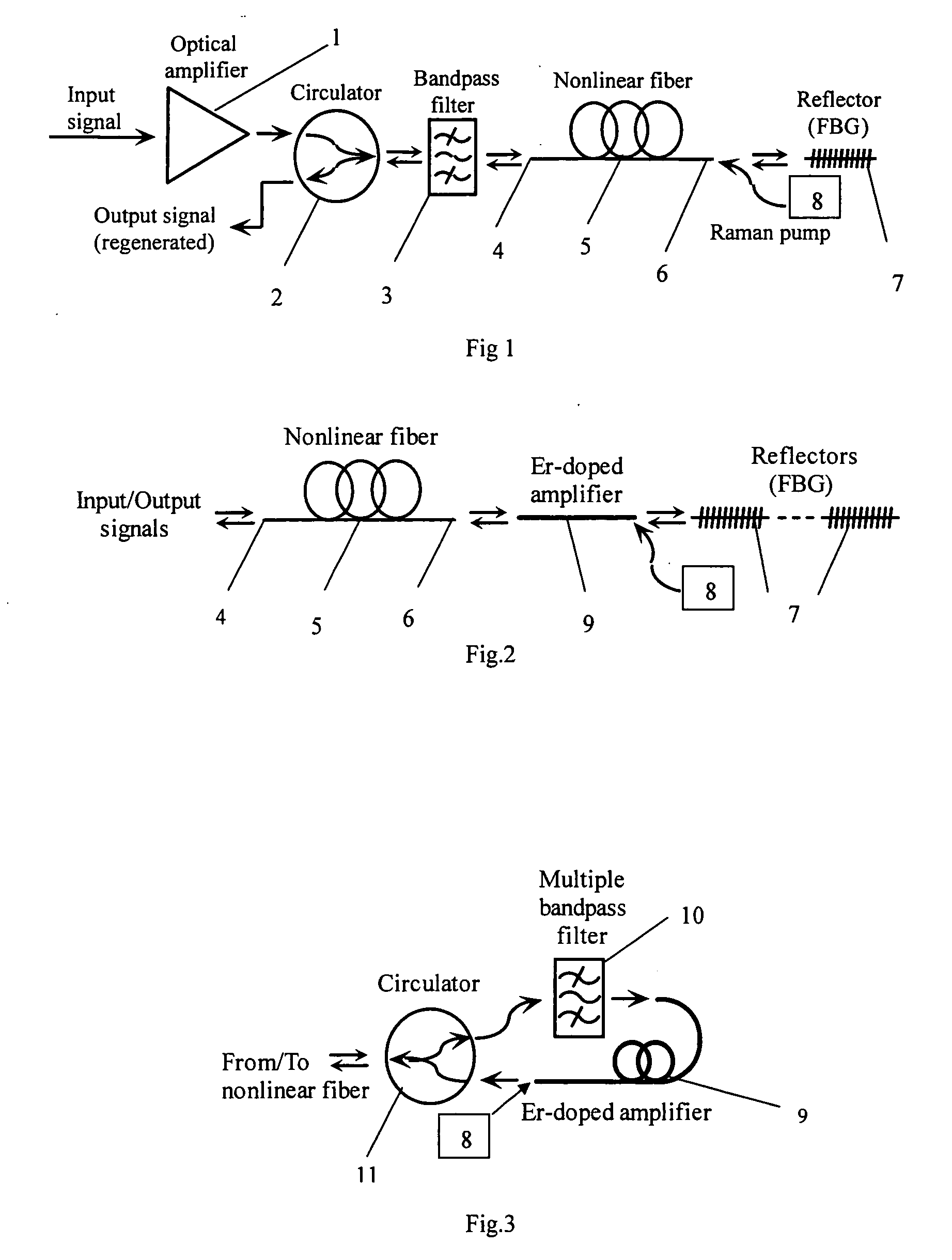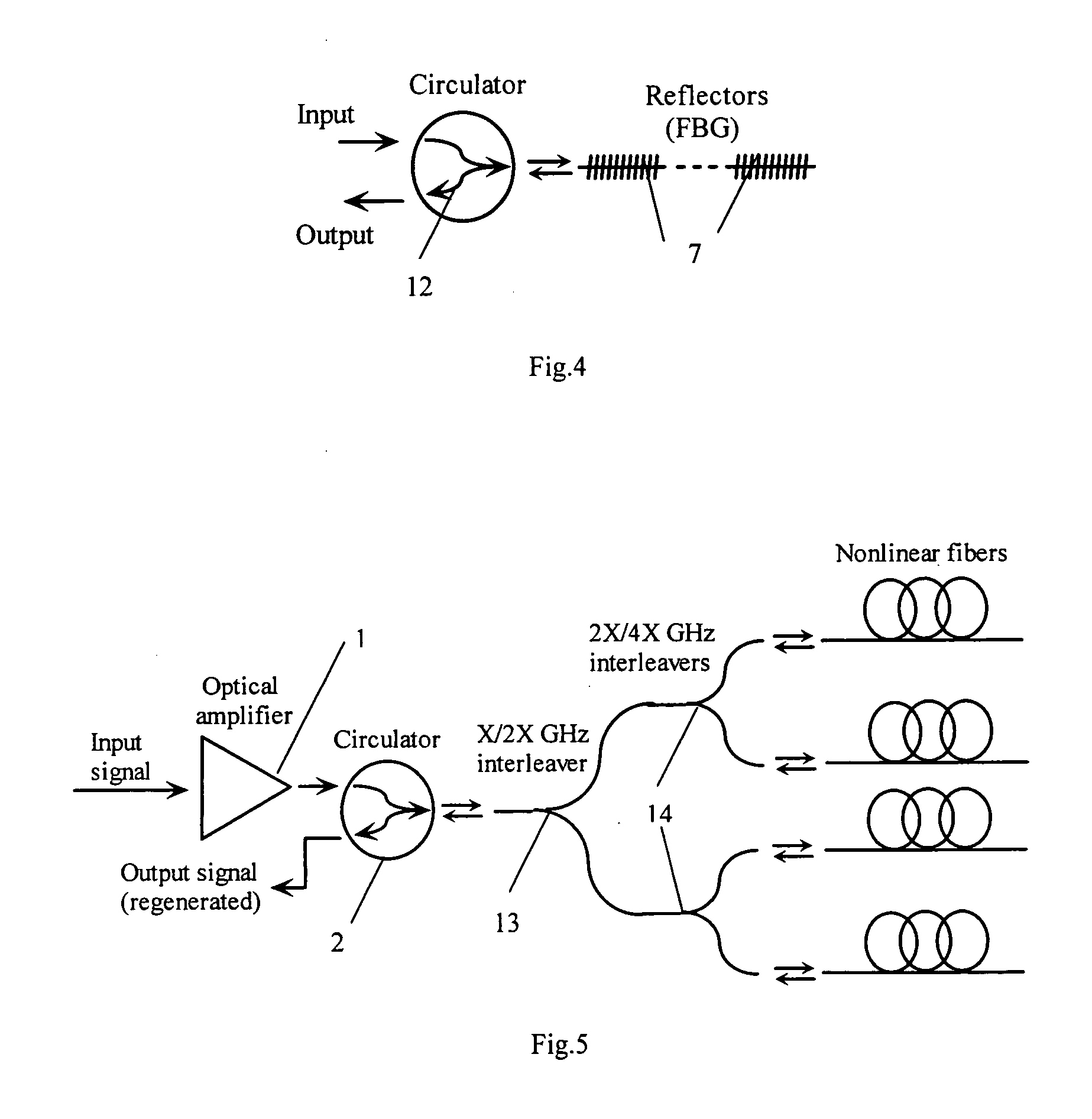All-optical signal regeneration
- Summary
- Abstract
- Description
- Claims
- Application Information
AI Technical Summary
Benefits of technology
Problems solved by technology
Method used
Image
Examples
Embodiment Construction
[0018] Reference will now be made in detail to the present preferred embodiments of the invention, examples of which are illustrated in the accompanying drawings. Whenever possible, the same reference numerals will be used throughout the drawings to refer to the same or like parts.
[0019]FIG. 1 represents a simple form of the regenerator in accordance with the invention, and thus illustrates the key steps of the method of the invention. An optical input signal in a return-to-zero pulse format at a first wavelength which will be designated λ1 is first amplified by an optical amplifier 1 (erbium-doped fiber amplifiers, Raman amplifiers and semiconductor optical amplifiers are all suitable) and then passed via a circulator 2 and a bandpass filter 3 tuned to the wavelength λ1 (whose respective functions will be detailed shortly) to enter the first or left-hand end 4 of a length of highly nonlinear optical fiber 5. Due to self-phase modulation in the fiber, it emerges from the second or ...
PUM
 Login to View More
Login to View More Abstract
Description
Claims
Application Information
 Login to View More
Login to View More - R&D
- Intellectual Property
- Life Sciences
- Materials
- Tech Scout
- Unparalleled Data Quality
- Higher Quality Content
- 60% Fewer Hallucinations
Browse by: Latest US Patents, China's latest patents, Technical Efficacy Thesaurus, Application Domain, Technology Topic, Popular Technical Reports.
© 2025 PatSnap. All rights reserved.Legal|Privacy policy|Modern Slavery Act Transparency Statement|Sitemap|About US| Contact US: help@patsnap.com



